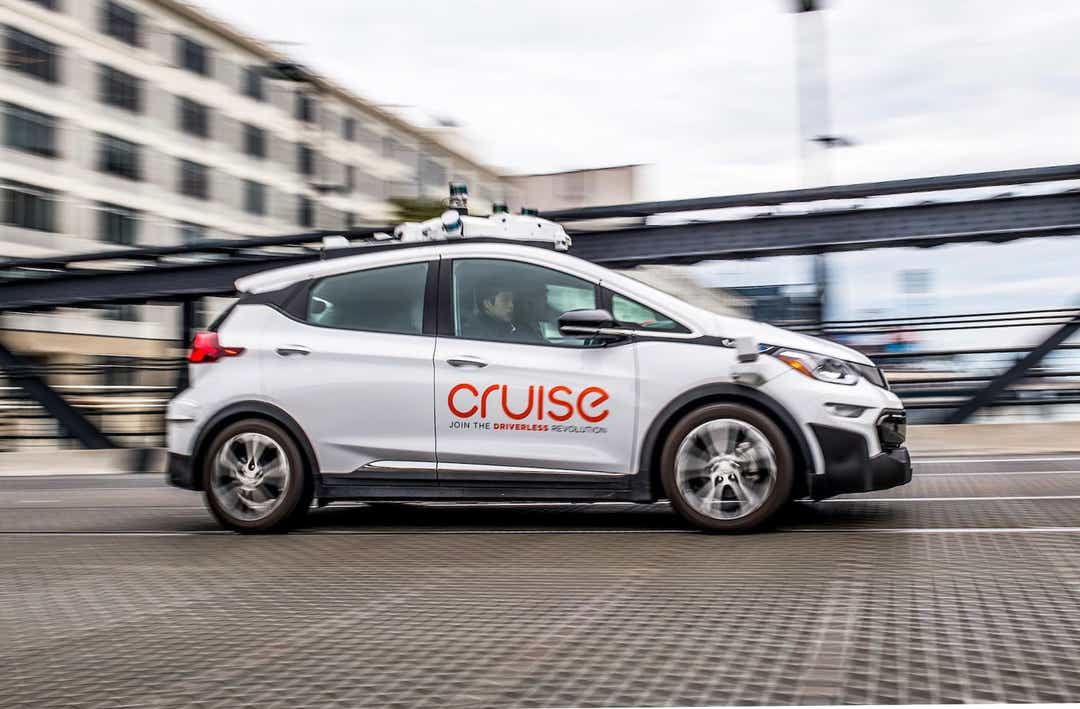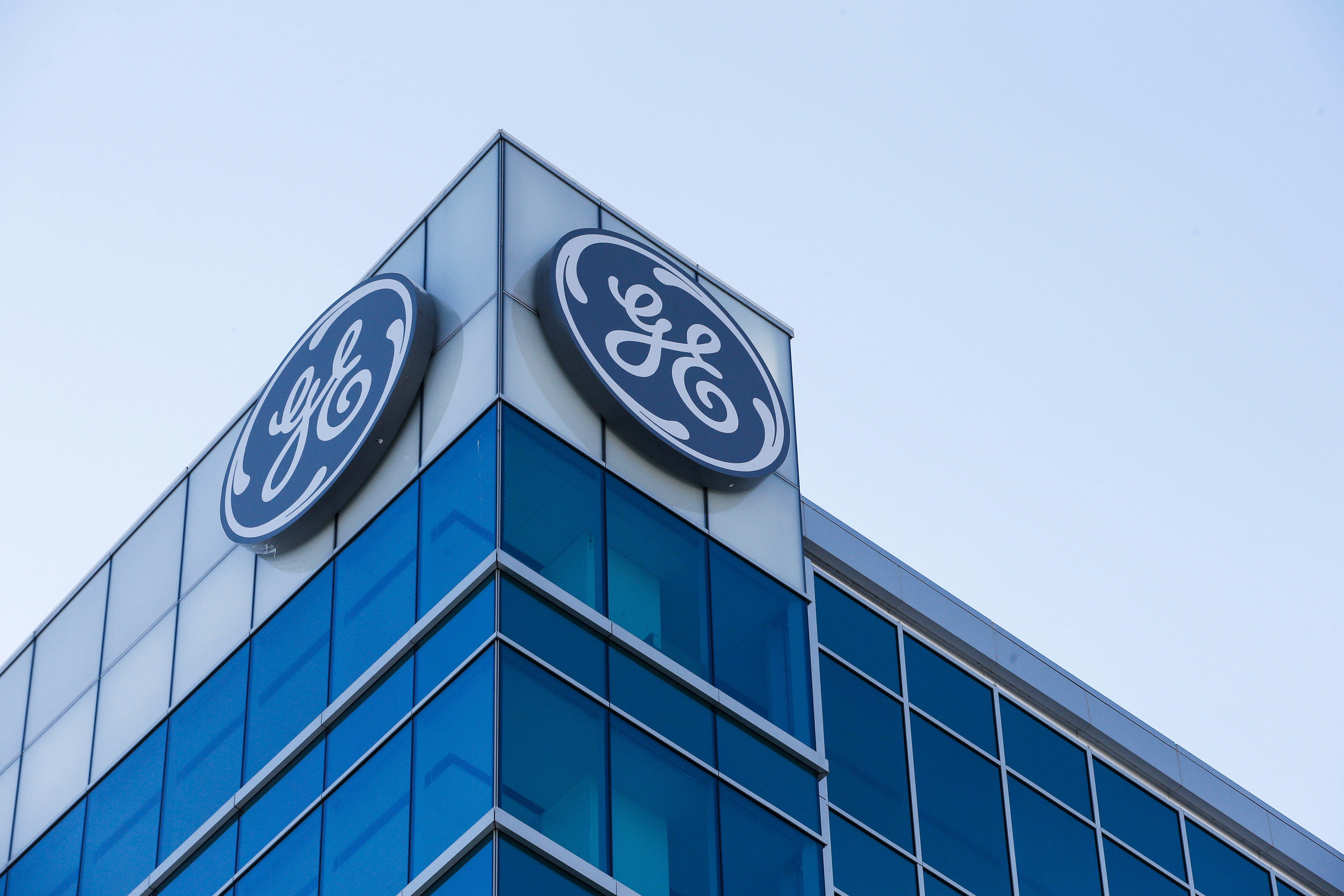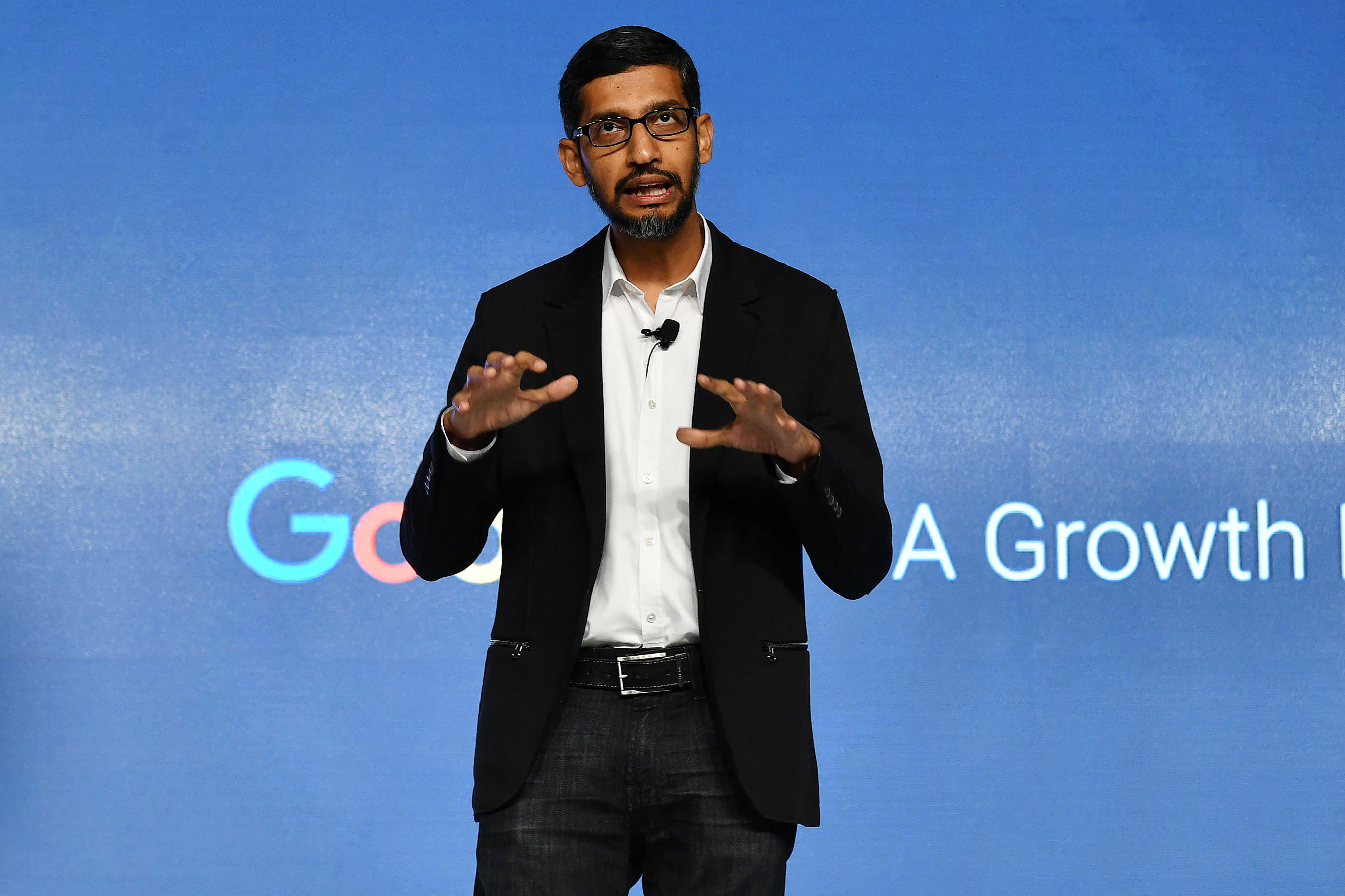Jamie L. LaReau
Detroit Free Press
Published 8:07 AM EDT Apr 30, 2019
General Motors is all-in on electric and self-driving cars — but amid dampening enthusiasm for autonomous vehicles, GM's aggressive timeline to put them on public roads is pie in the sky, say some industry analysts.
Still, the Detroit carmaker is not backing down from its promises. A GM spokesman said the company still plans to deploy a fleet of self-driving cars for ride-sharing in a major market this year, and referenced CEO Mary Barra's comments in February that GM continues "to make rapid progress with the technology."
"I think we’re in a very strong position, if not a leading position," Barra said at the time. "I would say everything is moving forward in a very positive fashion."
To continue to pay for that progress, GM is relying on its core business. On Tuesday, that core business delivered, albeit with mixed results. Sales of the 2019 Chevrolet Silverado and GMC Sierra light-duty crew cabs helped drive first-quarter profits.
GM reported a net profit of $2.1 billion for the first quarter, up from $1.1 billion in the year-ago period. But its earnings before interest and taxes were down 11.5 percent, its net revenue was down 3.4 percent and sales in China experienced a double-digit percentage dip.
The automaker's adjusted earnings per share of $1.41 beat Wall Street estimates. That included a benefit of 31 cents from GM's investment in Lyft and other revaluations. Analysts polled by Thomson Reuters expected GM to report adjusted earnings of $1.10 per share. GM reported adjusted earnings of $1.43 per share in the first quarter of 2018.
GM said it remains on track to save $2 billion to $2.5 billion this year as part of its restructuring. That includes idling five plants in North America and cutting some 14,000 jobs.
"GM's first-quarter operating results were in line with expectations we shared in January," said CEO Mary Barra in a statement. "My confidence in the year ahead remains strong, driven by our all-new full-size truck launch and our ongoing business transformation."
Long way out
Profit was driven by SUVs and pickups, which, as is the case with other automakers, must finance both the current business and development of the next generation of transportation.
Many analysts say it will be least five to 10 years out before fully autonomous cars can safely hit open public roads and offer a profitable business model.
"I am sure the people in GM and elsewhere have realized the challenge of what they're trying to do for a long time," said Sam Abuelsamid, principal analyst at Navigant Research in Detroit. "I think the reason GM has been so bullish on it publicly is to rally the stock market behind it and get the support that technology companies get."
GM acknowledges that it is always looking at ways to create shareholder value and attract investors, given the cost to develop self-driving cars. It has partnered with Honda and Japan's SoftBank in the effort, with both investing more than $2 billion.
GM leaders have promoted self-driving technology aggressively, too. Dan Ammann, CEO of GM Cruise, the company's AV unit, has said, “The total addressable market for AV is something that is measured in trillions, whether you measure it in miles or dollars. It is a known market. We can see the market that's there today.”
GM Cruise, GM's self-driving car unit, declined to make Ammann available for this story.
Wall Street may not be buying GM's pitch. The market's appreciation of autonomous cars "appears to have changed materially over the past year," Morgan Stanley Adam Jonas wrote in a March 26 investor note. "We believe 'peak AV' sentiment in the market may have occurred in late 2017/early 2018."
If GM Cruise cannot remove the human safety driver from AVs when they're on public roads, Jonas said, it "may prove challenging" to make any money with the cars.
Funding the future
Earlier this month, Ford CEO Jim Hackett said, "We overestimated the arrival of autonomous vehicles."
Ford's first self-driving car will still come to market in 2021, but, Hackett said, "Its applications will be narrow" and it will operate in a geofenced area.
Uber Technologies Inc. is also retreating. It said recently it will be a long time before self-driving cars are ready for wide-scale deployment, Reuters reported.
Uber has spent more than $1 billion on self-driving technology to compete with Alphabet Inc., which owns Waymo, Apple Inc. and GM Cruise, Bloomberg reported. Last year, GM Cruise spent $728 million and said it would top $1 billion this year. Waymo does not disclose spending.
More: How General Motors is leading the race for self-driving cars
More: GM adds 400 jobs to Kentucky plant slated to build the next-generation Corvette
"The auto industry went through this period of, 'Oh, my God, we're losing our grip on the market. People aren't going to own cars and they're going to ride sharing,'" said Maryann Keller, principal of Maryann Keller & Associates in New York. "GM will bring something out, they've made the promise, so they'll have to show something. Whether it's a fully functional, driverless car ... my guess is probably not."
GM may follow the model of Aptiv, which partnered with Lyft, and in January 2018 launched a self-driving ride-hailing pilot program in Las Vegas, Abuelsamid said. GM owns a stake in Lyft, but is not actively partnering with it.
Aptiv has given more than 35,000 rides in its autonomous fleet in the past year with no accidents and it has a 4.95 driver rating out of 5. But it operates with safety drivers.
For now, Ford and GM are still traditional car companies.
"We still pay attention to their quarterly sales figures and earnings because their profits are still coming from the car business," said Keller. "If they're not profitable there, I don't know how they fund their autonomous vehicle business."
First-quarter results
For now, GM's core car business had a choppy quarter, but shows signs of leveling out later this year, analysts say.
GM delivered 665,840 vehicles in the quarter in the United States, a year-over-year drop of 7% compared with the industry average of 2.5% dip in the quarter. GM's sales in China hit 814,000, down 17.5%.
GM market share was also down by nearly 5% compared with the year-ago quarter, said Jeremy Acevedo, Edmunds' manager of industry analysis. Still, the carmaker lowered incentive spending by nearly 15% in the quarter while its crosstown rivals increased incentives, he said.
But GM said its sales of the new 2019 Silverado and Sierra rose 20% and generated average transaction prices nearly $5,800 higher than the outgoing models they replaced. But total pickup sales took an 8% hit in the quarter compared to a year ago, Edmunds' Acevedo said.
"GM is dealing with transitional pains as it phases out some of its cars, and the slow ramp-up of the Silverado is taking a bite out of the company's pickup truck sales," Jeremy Acevedo, Edmunds' manager of industry analysis.
GM has done a better job of reining in incentives this quarter compared to last year, making its prospects for the remainder of the year brighter, said Acevedo.
"Once GM starts firing on all cylinders with the Silverado it should retake its place as the second best in large truck sales" after being passed by the Ram in the first quarter, Acevedo predicted. "The ongoing roll out of the (Chevrolet) Blazer (SUV), the addition of heavy duty trucks and the Cadillac CT6 (sedan) should also be a shot in the arm for the company this year."
The Detroit automaker's pretax profit of $2.3 billion was a decline from $2.6 billion a year ago. Overall revenue of $34.9 billion was down by 3.4% from the same period in 2018.
Pretax profits in North America were at $1.9 billion, down from $2.2 billion reported in the same period in 2018.
GM said it "remains committed" to making job opportunities available for the 2,800 U.S. hourly workers still impacted by its move to idle five plants in North America and has placed about 1,300 workers in jobs at other factories to support the growth in pickup and SUV sales.
GM on course
GM is investing billions in GM Cruise and planning to hire 1,000 people over the next nine months at its operations in San Francisco.
That comes after the automaker cut 8,000 white-collar jobs and said it will idle five factories in North America this year and early next year, affecting another 6,200 jobs. The restructuring will save about $2.5 billion this year, GM said.
Barra has said GM is open to more partnerships similar to what it has with Honda and SoftBank.
At an investor conference in January, Barra said the main hold-up to putting self-drivng cars on public roads is safety. The cars struggle to master the crowded and complex streets of San Francisco, where GM is mainly testing them, she said. The other roadblock is figuring out a profitable business model, said Barra.
"GM has to answer the question of what is the business model," said Keller. "They haven't answered that question. To put an AV in a geofenced area where there are no potholes and only straight streets, that can be done today."
Problems and profits
Real world issues such as fog, snow and ice or navigating complex turns or tricky intersections throw the cars off, Keller said.
"This is pie in the sky," said Keller. "Increasingly there's skepticism among Wall Street as to when all of this is going to happen."
Main Street is just as skeptical as Wall Street. Less than one in 10 new car buyers said they "love" the idea of owning a full self-driving car, and three in 10 said they actually "hate" the idea, said Alexander Edwards, president of Strategic Vision in San Diego.
Strategic Vision's main focus is understanding consumer values and how they impact behavior. It surveyed about 80,000 current new vehicle owners in 2018 asking if consumers are ready for a fully AV fleet this year, Edwards said.
"For the most part, the consumer is not ready for this technology to hit the market. Some could make comparisons to the '80s when we were told everyone would be going electric," said Edwards. "We are still waiting for consumer adoption to happen."
Edwards' research did show that most consumers are willing to try semi-autonomous driving features that enhance safety. When a vehicle parks itself or adjusts speed during cruise control, most respondents report loving the experience.
If GM cannot deliver on its promise to launch autonomous cars this year, its stock price could suffer, said Karl Brauer, executive publisher of AutoTrader and Kelley Blue Book. But if GM delivers, even on a more limited basis, it will be significant. GM will have shown it can develop the self-driving technology and build the cars. Others, such as Waymo, cannot build cars, he said.
More: Waymo plans final assembly on self-driving cars in Detroit; will need 100-400 workers
Morgan Stanley's "Jonas has said, 'That's it, no more points for autonomous cars, that's baked in the price now,'" said Brauer. "If sometime this year, there is a fleet of 10 or less self-driving cars that GM launches and it is effective, I still think that counts."
That's because even if the race for AVs takes longer than the innovators had thought, Brauer said, "GM is still one of the leaders in that race, right up there with (Waymo). That's perception, and perception is what drives the stock price."
Contact Jamie L. LaReau at 313-222-2149 or jlareau@freepress.com. Follow her on Twitter @jlareauan. Read more on General Motors and sign up for our autos newsletter.
Let's block ads! (Why?)
https://www.freep.com/story/money/cars/general-motors/2019/04/30/gm-profit-2-billion-truck-sales-self-driving/3412164002/
2019-04-30 12:00:00Z
CBMieWh0dHBzOi8vd3d3LmZyZWVwLmNvbS9zdG9yeS9tb25leS9jYXJzL2dlbmVyYWwtbW90b3JzLzIwMTkvMDQvMzAvZ20tcHJvZml0LTItYmlsbGlvbi10cnVjay1zYWxlcy1zZWxmLWRyaXZpbmcvMzQxMjE2NDAwMi_SASRodHRwczovL2FtcC5mcmVlcC5jb20vYW1wLzM0MTIxNjQwMDI






